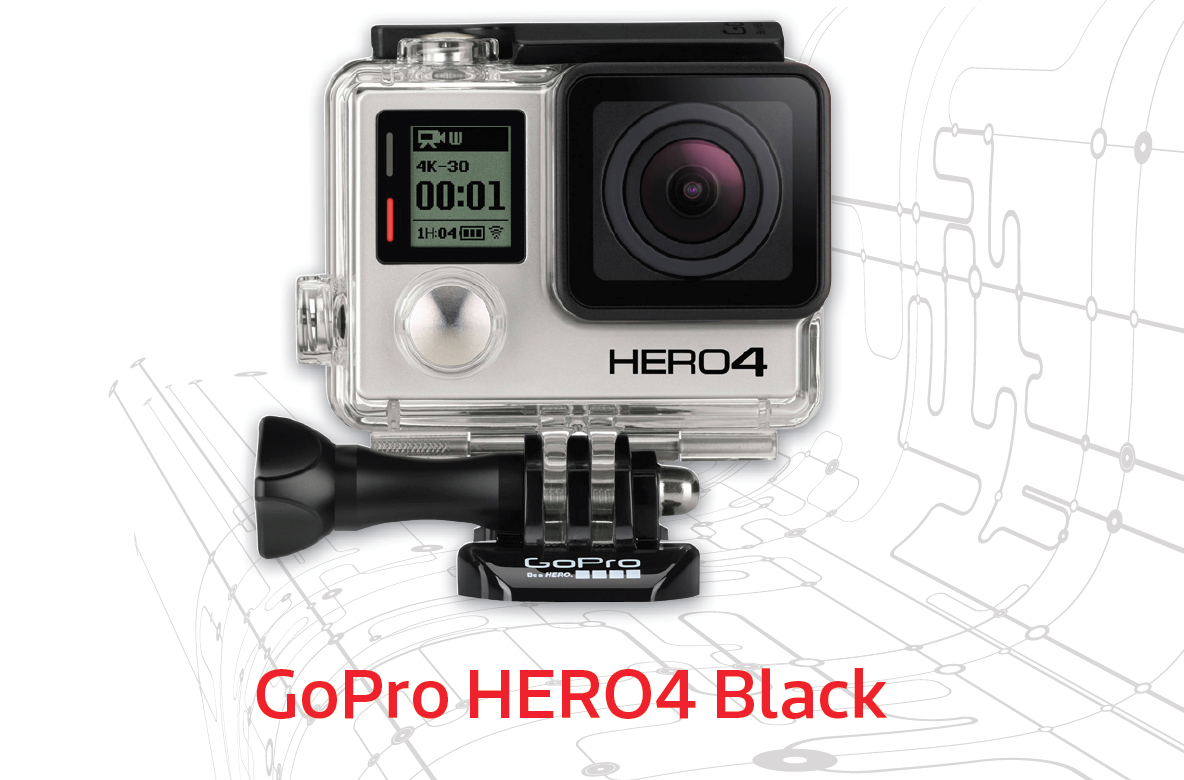
The HERO4 is the latest offering in the increasingly popular GoPro mountable video camera product line. With up to 240 frames-per-second, the HERO4 is the first camera of its kind to capture 4K ultra-HD video. This enhanced video capability paired with built-in Wi-Fi and Bluetooth® requires processors twice as powerful as the previous version. This TechXposed Teardown will take a look inside at the brains behind the most advanced GoPro yet.
Ambarella A9 (backside of board that was missed, largest chip on the board – you might be able to make out Ambarella lasered into the package)
• Dual Core ARM® Cortex™-A9 @ 1GHz
• Ambarella Image and Video DSPs
• Integrated memory interfaces (NAND, DRAM, SDIO)
Imaging System (could include the imager and lens)
• 12MP stills, 30fps burst mode
• 4k30, 1080p120, 720p240 video
• Max aperture f/2.
Micron MT29RZ4B8DZZNHSK-18W.4T2 (right next to the A9 chip; large, but not quite as large as the A9)
• 1 NAND, 2LPDDR2 MCP
• 4GB x8 NAND, 3.3V
• 8GB x32 LPDDR2, 1.2V, 533MHz
Logic Board – (largest board, has the Ambarella and Micron parts)
Imager Board – (the only board with a clear package on the chip instead of black)
HERO Port Board – (has a long silver connector that, when assembled, is accessible through the back….microSD card slot)
Mini USB port and Micro HDMI port
Click here to read the full teardown in EEWeb Pulse Magazine
Advertisement
Learn more about Electronic Products Magazine





